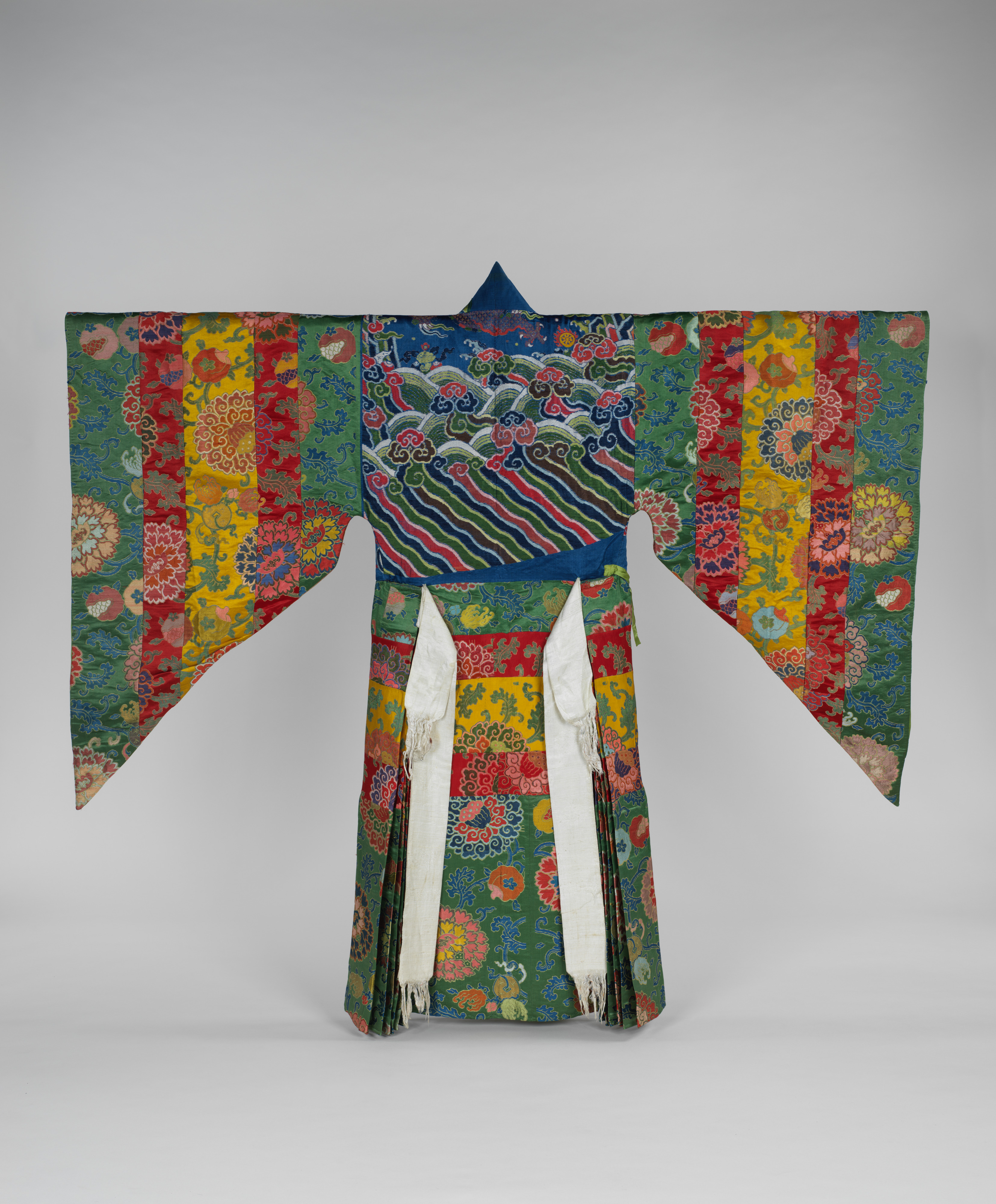Monastic Dance Robe
Ritual dances (cham) featuring music have always been an important part of Tibetan Buddhist practice. Stag dances are especially popular during the end-of-year Gu Tor Festival. These performances, dedicated to fierce deities, siphon malignant forces into a torma (a sculpted offering often made of butter and flour). A monk dressed as a stag cuts the torma into pieces, scattering them as he dances to rid the community of hostile forces. The large audiences that attended these dances had to see the stag costumes from afar, so they are deliberately exaggerated—the large eyes and antlers of this mask give the dancer greater stature. The elaborate Chinese silk robe, showing a dragon cavorting among clouds and waves, was likely a gift to a Tibetan monastery.
Due to rights restrictions, this image cannot be enlarged, viewed at full screen, or downloaded.
This artwork is meant to be viewed from right to left. Scroll left to view more.



